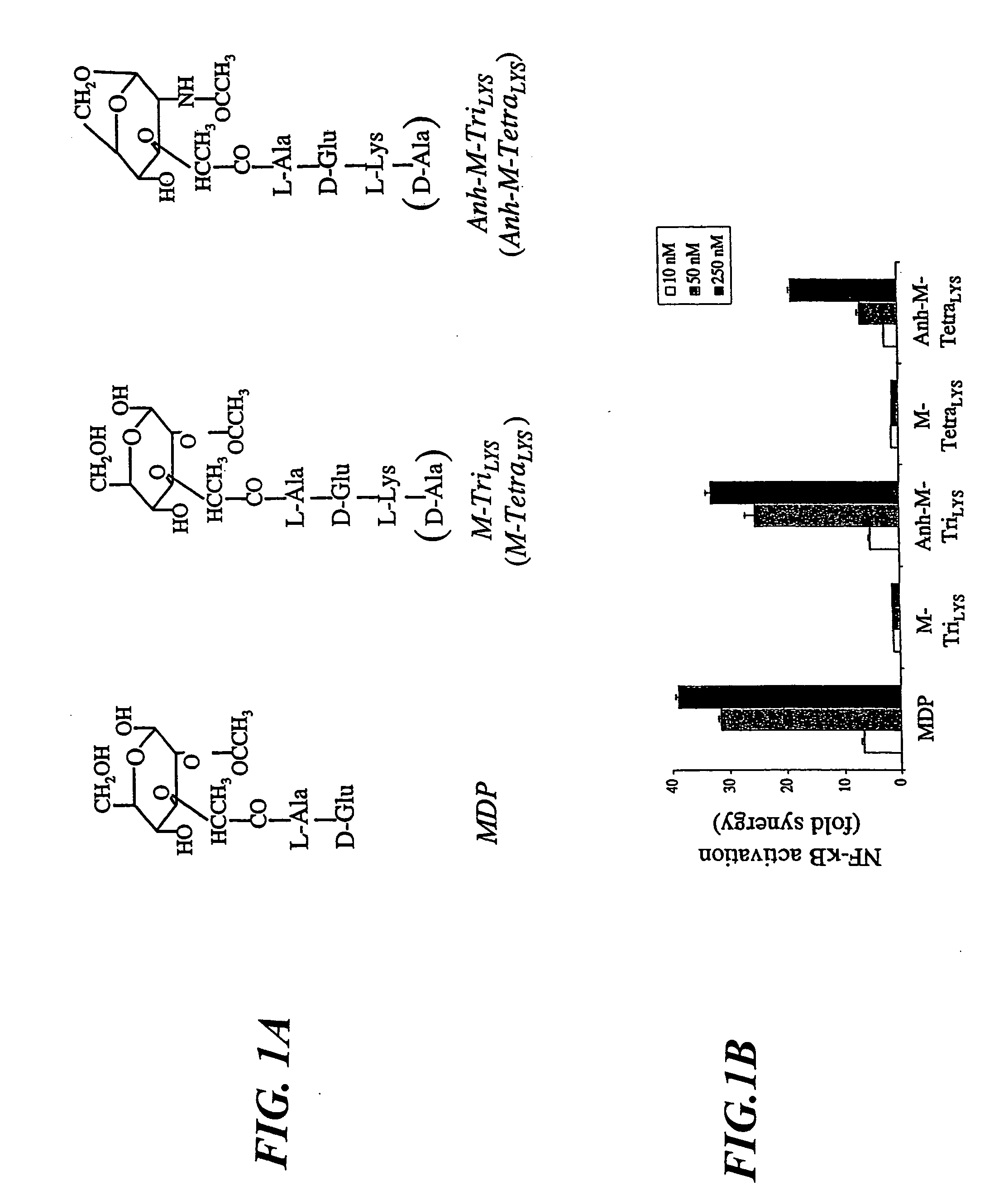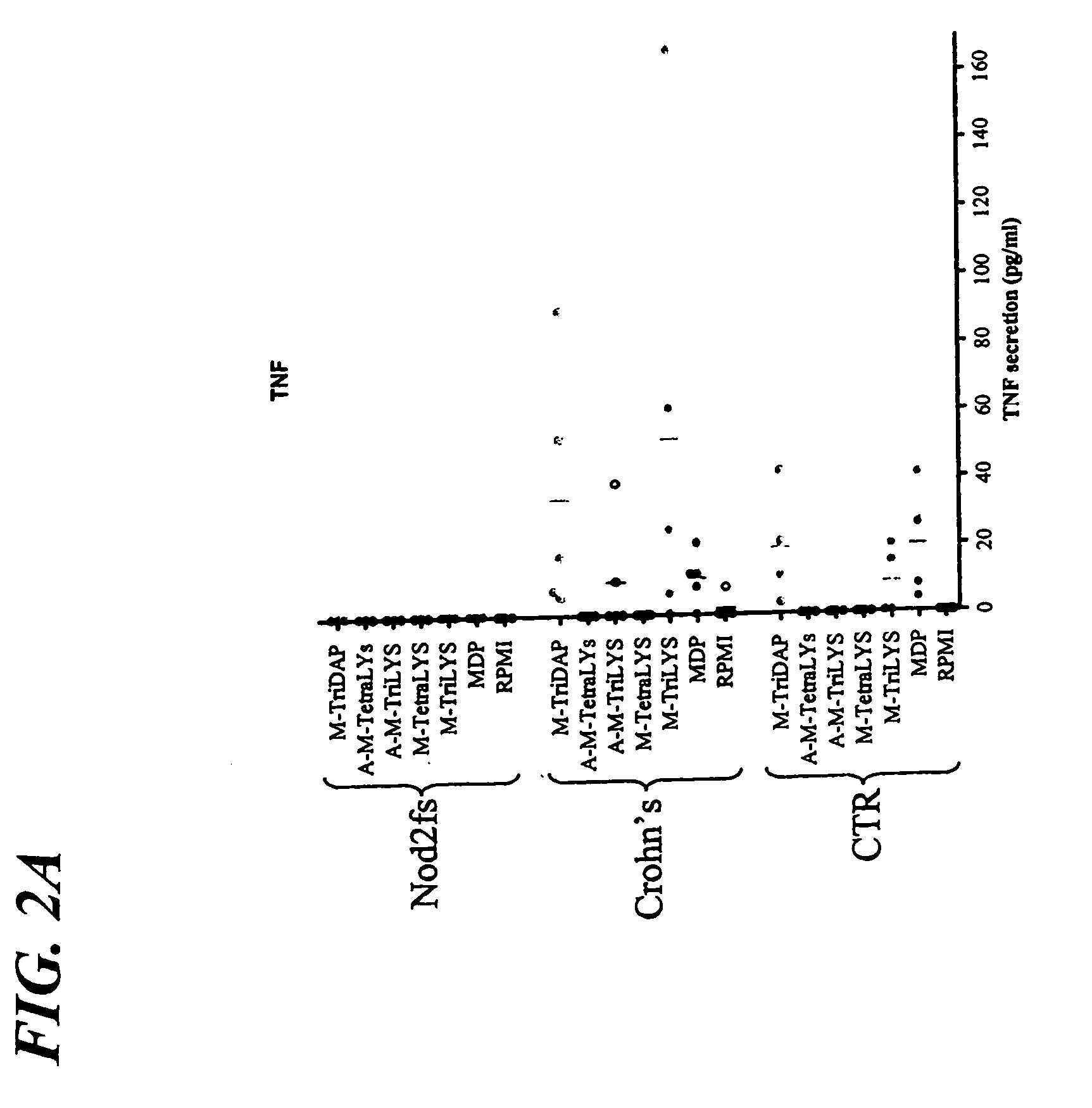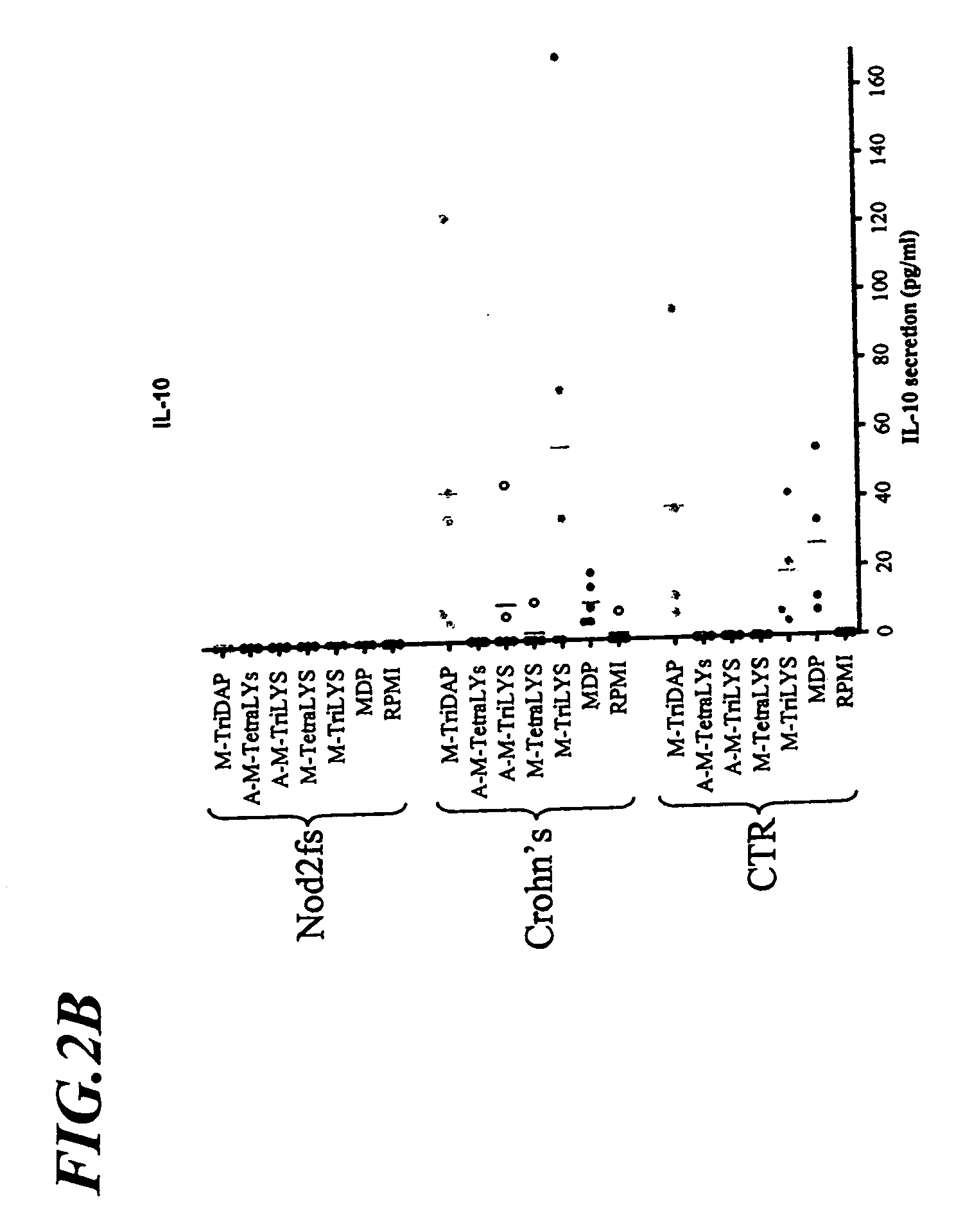Method for screening molecules that restore NOD1 activity in cells containing an NOD2 mutation that reduces or eliminates NOD1 activity
- Summary
- Abstract
- Description
- Claims
- Application Information
AI Technical Summary
Benefits of technology
Problems solved by technology
Method used
Image
Examples
example 1
Analysis of Nod1 Activity in Cells having Nod2fs Mutation
Experimental Procedures
Preparation of Highly Purified Peptidoglycans from Gram-Negative and Gram-Positive Bacteria
[0029] Bacterial strains used to prepare PGN are the following: Helicobacter pylori 26695; Staphylococcus aureus COL (from Olivier Chesneau, Institut Pasteur); Streptococcus pneumoniae R800. The PGN purification procedures were exactly as previously described (6, 19). Purity of samples was assessed by HPLC amino acid and saccharide analysis after HCl hydrolysis. Also, each PGN preparation was tested or the absence of LPS contamination using the Limulus Ameobocyte Lysate assay as previously described (19). The absence of TLR2-detected contaminants (lipoproteins or lipoteichoic acids) was tested on thioglycholate elicited mouse peritoneal macrophages from either C57B16 or TLR2% mice as previously described (19).
Preparation of Muropeptides
[0030] DAP- and Lys-containing UDP-MurNAc-peptides were prepared as desc...
example 2
Screening Method for Identifying Compounds which Restore Nod1 Activity in Cells having an Nod2 Mutation
Isolation of PBMCs:
[0040] Human PBMCs (peripheral blood mononuclear cells) from a Nod2fs patient are isolated. 10-20 ml of blood from these subjects is obtained and yields about 5-7×106 PBMCs. Cells are isolated and seeded in 96 well plates at 105 cells / well. From a single subject an average of 60 wells can be obtained.
[0041] Stimulation of PBMCs.
[0042] The objective of the screening method is to identify a compound which allows Nod2fs cells to detect a Nod1 specific agonist such as M-TriDAP, the specific ligand of Nod 1. Thus, in each well cells are incubated overnight with 100 nM M-TriDAP or with a control without M-TriDAP. The following day, the amount of stimulation induced by exposure to M-TriDAP is determined by measuring cytokine secretion in the cell supernatants obtained from the overnight incubations. Levels of different cytokines may be measured, including IL-1β, IL...
PUM
| Property | Measurement | Unit |
|---|---|---|
| Mass | aaaaa | aaaaa |
| Concentration | aaaaa | aaaaa |
| Cell angle | aaaaa | aaaaa |
Abstract
Description
Claims
Application Information
 Login to View More
Login to View More - R&D
- Intellectual Property
- Life Sciences
- Materials
- Tech Scout
- Unparalleled Data Quality
- Higher Quality Content
- 60% Fewer Hallucinations
Browse by: Latest US Patents, China's latest patents, Technical Efficacy Thesaurus, Application Domain, Technology Topic, Popular Technical Reports.
© 2025 PatSnap. All rights reserved.Legal|Privacy policy|Modern Slavery Act Transparency Statement|Sitemap|About US| Contact US: help@patsnap.com



